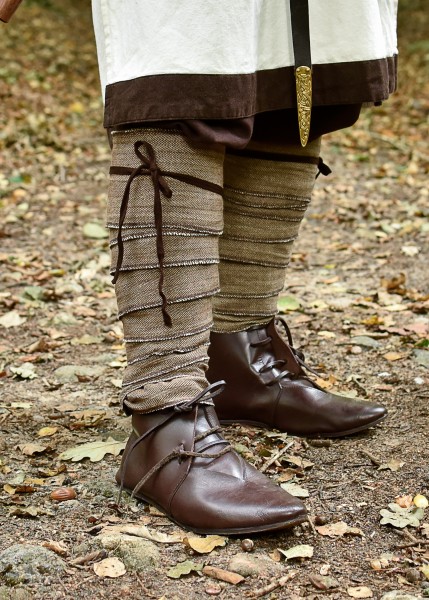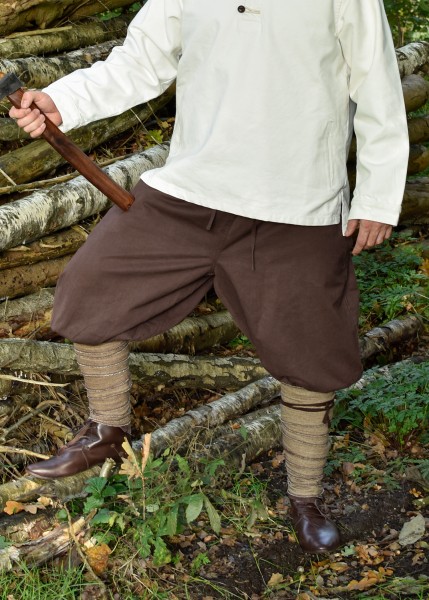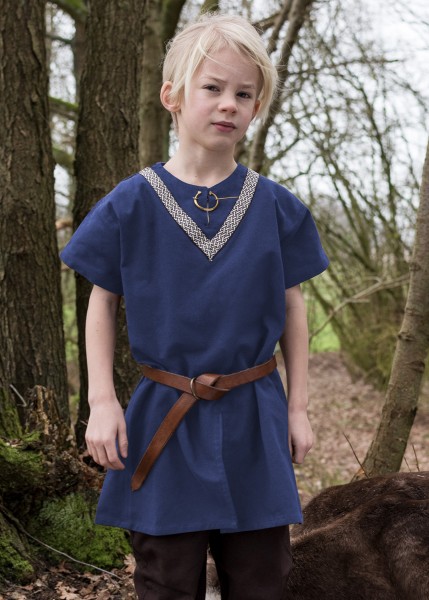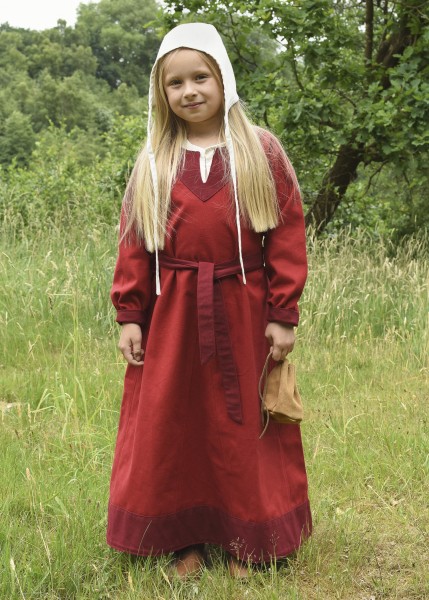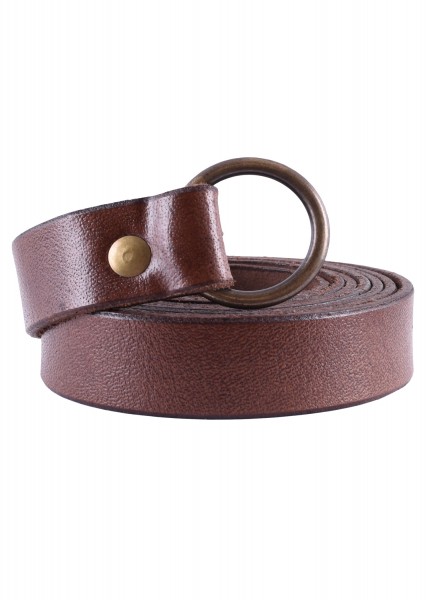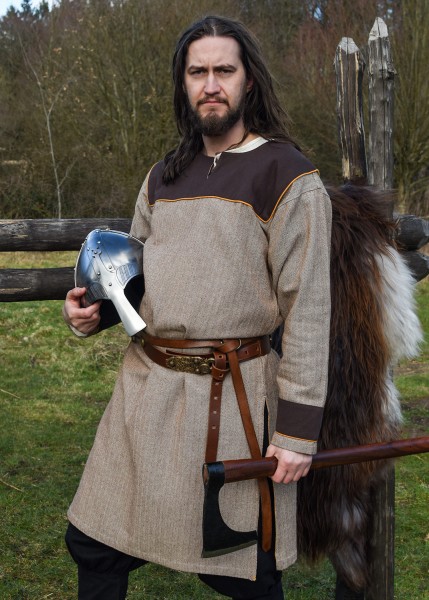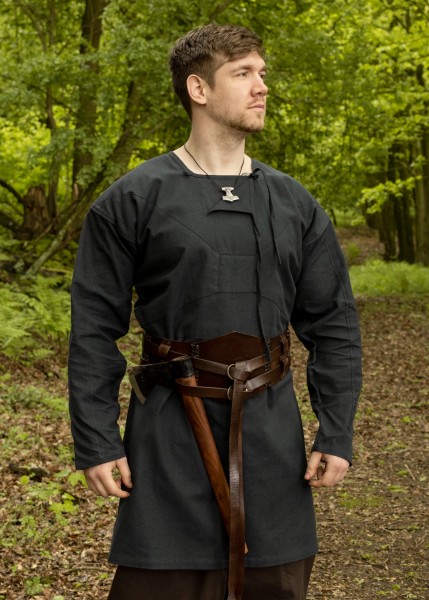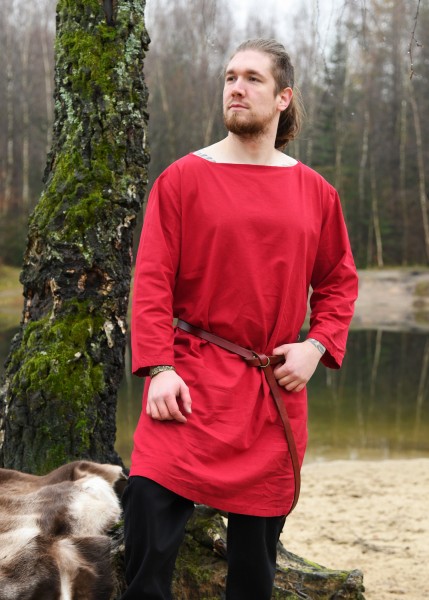Early Medieval Tunic Vallentin, natural-coloured/brown
This straight cut tunic is made from cotton fabric. Slits on the side seams allow for adequate freedom of movement, and the neckline, cuffs and bottom hem are offset in a different colour. The round neckline has a slit on the front. The split neck can be worn open or closed with a fibula or brooch, according to your preferences.
This tunic is ideal for the portrayal of many North and Central European peoples during the Migration Period (Völkerwanderung) and the early Middle Ages. The garb of the time was characterized by knee-length outerwear, colour contrasting details and simple patterns mainly consisting of rectangles sewn together.
The look and cut of this tunic are based on historical illustrations, amongst others the Stuttgart Psalter and the Bayeux Tapestry.
Details:
- Available sizes: S, M, L, XL, XXL
- Colour: natural-coloured/brown (also available: red/blue, blue/red, blue-grey/brown)
- Material: 100% cotton
- Length overall size L: approx. 117 cm (measured from the centre back neck down to the bottom hem)
- Care instructions: We recommend hand wash
| Size Chart - Men - Tunic | ||||||||||||
|
How to find the right size:
- To take your body measurements correctly in order to determine you clothing size, please always wrap the measuring tape horizontally around your body at the fullest part.
- For tops, sizes are based on your chest circumference.
- If you happen to fall between two sizes, we recommend that you go up a size.
- Ease is included in the pattern and reflected in the finished measurements.
Please note:
Delivery includes the tunic only! The other items pictured above are available separately in our online shop.
As authentic as possible, as modern as necessary!
This medieval tunic is part of Battle-Merchant's line of period clothing and medieval garments for men, women and children. From the first sketch to the last stitch, this garment was planned, designed and handcrafted with particular attention to detail. Our clothes are modeled (sometimes accurately, sometimes less so) on historical examples, grave finds and original museum pieces where they exist. We always endeavour to keep the necessary adjustments to today's standards, e.g. in terms of size and manufacturing process, to a minimum. Just see for yourself!





























